- Joined
- Feb 2, 2011
- Messages
- 2,093
NEW RELEASES FOR OCTOBER 2023
THE AGE OF ARTHUR
THE VIKINGS
VIKING ARCHERS
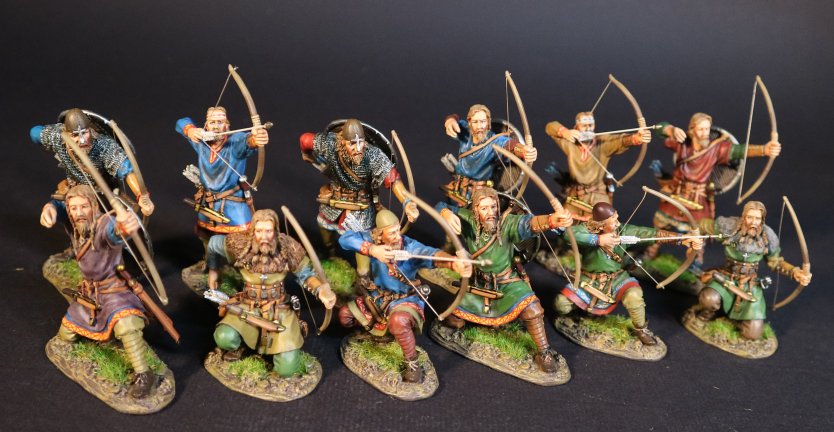
The Vikings made considerable use of the bow, both on land and at sea. Not only was it used to a considerable extent by the bondi (in Norway and Sweden the word “bow” could even be used to mean a warrior) but also it was used by nobles and kings, who took great pride in their personal accuracy.
Viking bows were mainly made from elm, although yew was also used.
In the Leidang bows were provided as part of the ship’s equipment. It was known that a bow and 24 arrows were supplied per 2 oarsmen. This suggests that up to 50per cent of a Viking national army might in fact be bow armed.
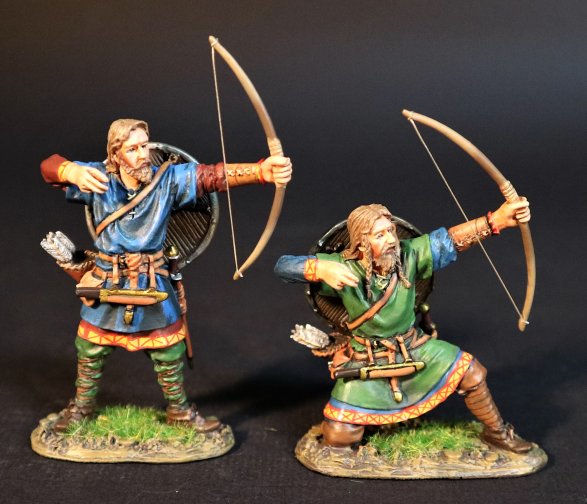
VIK-38A
THE AGE OF ARTHUR,
THE VIKINGS,
VIKING ARCHERS.
(2 pcs)
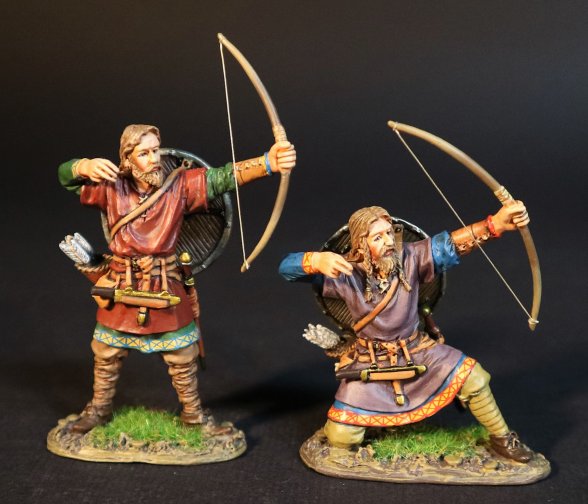
VIK-38B
THE AGE OF ARTHUR,
THE VIKINGS,
VIKING ARCHERS.
(2 pcs)
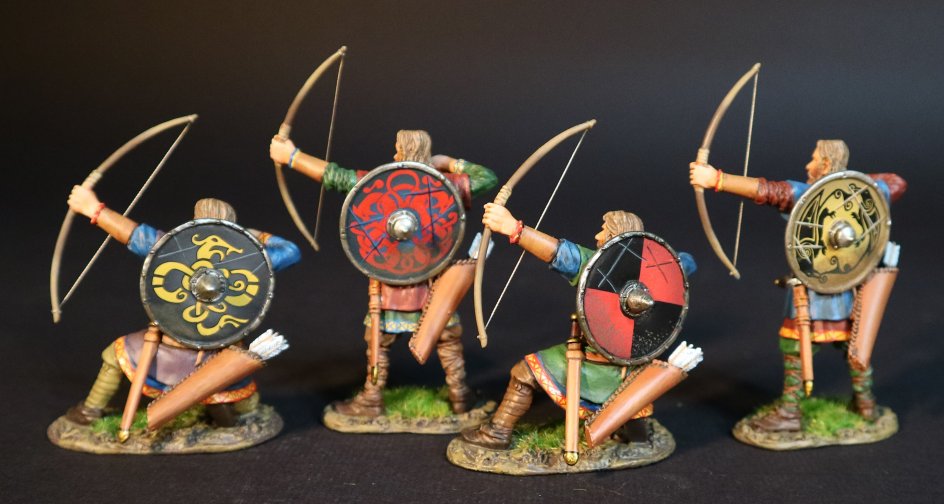
VIK-38N
THE AGE OF ARTHUR,
THE VIKINGS,
VIKING ARCHERS.
(4 pcs)
THE GREAT SIEGE OF MALTA 1565
The Great Siege of Malta occurred in 1565 when the Ottoman Empire attempted to conquer the Island of Malta, then held by the Knights Hospitaller.
The siege lasted nearly four months, from 18[SUP]th[/SUP] May to 11[SUP]th[/SUP] September 1565.
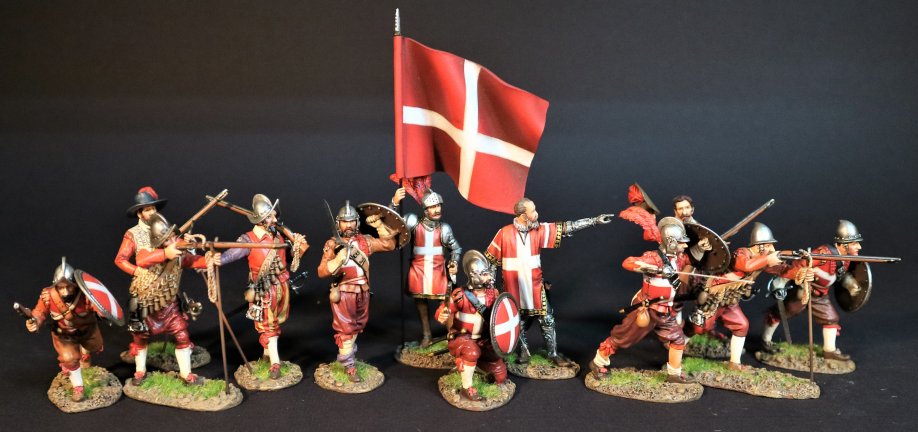
The Knights Hospitaller had been headquartered in Malta since 1530, after being driven out of Rhodes, also by the Ottomans, in 1522, following the Siege of Rhodes.
The Ottomans first attempted to take Malta in 1551 but failed. In 1565, Suleiman The Magnificent, the Ottoman Sultan, made a second attempt to take Malta.
The Knights, who numbered around 500 together with approximately 6,000 footsoldiers, withstood the siege and repelled the invaders. This victory became one of the most celebrated events of Sixteenth Century Europe, to the point that Voltaire said,
“Nothing is better known than the Siege of Malta”.
It undoubtedly contributed to the eventual erosion of the European perception of Ottoman invincibility, although the Mediterranean continued to be contested between Christian coalitions and the Muslim Turks for many years.
JEAN PARISOT de LA VALETTE, GRAND MASTER OF THE ORDER OF ST. JOHN OF JERUSALEM, OF RHODES AND OF MALTA.
Jean “Parisot” de la Valette (4[SUP]th[/SUP] February 1495 – 21[SUP]st[/SUP] August 1568) was a French nobleman and the 49[SUP]th[/SUP] Grand Master of the Order of Malta. As a Knight Hospitaller, joining the order in the Langue de Provence, he fought with distinction against the Turks at Rhodes.
As Grand Master, Valette became the Order’s hero and most illustrious leader, commanding the resistance against the Ottomans at the Great Siege of Malta in 1565.
After the great siege, he commissioned the construction of the new city of Valetta in 1566, laying the first stone with his own hands. The city became known as the most aristocratic and exclusive fortress in Europe, and Valletta remains the Maltese capital to this day.
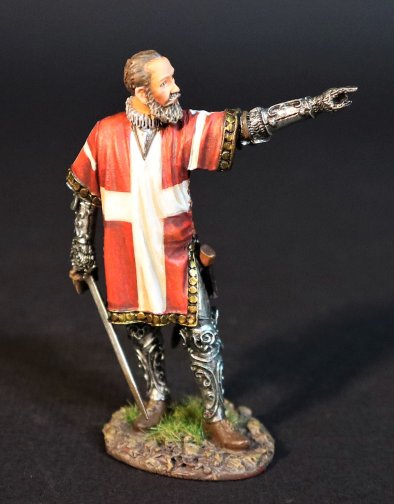
MALT-01
THE CRUSADES,
THE GREAT SIEGE OF MALTA 1565,
JEAN PARISOT de LA VALETTE,
GRAND MASTER OF THE ORDER OF ST. JOHN OF JERUSALEM,
OF RHODES AND OF MALTA.
(1 pc)
La Valette never saw the completed city, and died from a stroke on 21[SUP]st[/SUP] August 1568.
His tomb can be found in the Crypt of the Conventual Church of the Order (now St. John’s C0-Cathedral) situated within the walls of Valletta. The inscription on his tomb, which was composed by his Latin Secretary, Sir Oliver Starkey, the last Knight of the English Langue at the time of the Great Siege, states in Latin,
Here lies La Valette.
Worthy of eternal honour,
He who was once the scourge of Africa and Asia,
And the shield of Europe,
Whence he expelled the barbarians by his Holy Arms,
Is the first to be buried in this beloved city,
Whose founder he was.
Jean de Valette, Grand Master of the Knights of Malta, had a key influence in the victory against the Ottomans with his example and his ability to encourage and hold people together. This example had a major impact, bringing together the Kings of Europe in an alliance against the previously seemingly invincible Ottomans. The result was the vast union of forces against the Ottomans at the Battle of Lepanto six years later.
Such was the gratitude of Europe for the Knights’ heroic defence that money soon began pouring into the island, allowing Valette to construct a fortified city, Valletta, with the intent to deny the position to any future enemies.
EL CID AND THE RECONQUISTA
THE SPANISH
The age in which El Cid lived has since been termed the “Reconquista”, or Christian reconquest of Spain from the Moors, and was one of the most colourful periods in military history.
The armies are spectacular and varied, ranging from the noble Christian Knights to the Muslim Andalusians, through to the religious zeal of the African invaders, the Almoravids and Almohads.
Although the period is often portrayed as a simple war of religion, it was in fact a great deal more complex, with Muslim commonly fighting Muslim, and Christian fighting Christians, with both sides using allies and mercenaries whenever it suited them.
This period, during the lifetime of El Cid 1040-1100AD saw the rise of heavy cavalry charges and other northern European influences, especially in the kingdoms of Aragon and Catalonia, which had the strongest links to France.
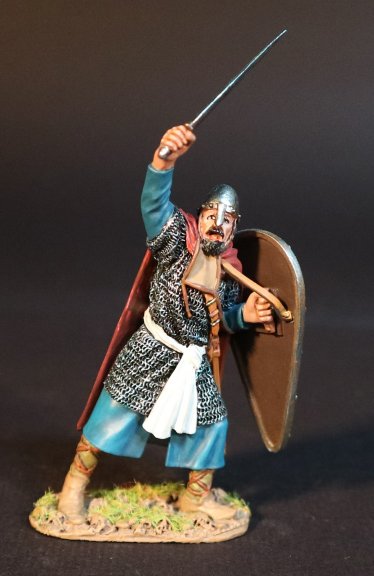
CID-24
THE CRUSADES,
EL CID AND THE RECONQUISTA,
SPANISH INFANTRY OFFICER.
(1 pc)
**PLEASE CONTACT YOUR LOCAL DEALER FOR FURTHER INFORMATION**
THE AGE OF ARTHUR
THE VIKINGS
VIKING ARCHERS

The Vikings made considerable use of the bow, both on land and at sea. Not only was it used to a considerable extent by the bondi (in Norway and Sweden the word “bow” could even be used to mean a warrior) but also it was used by nobles and kings, who took great pride in their personal accuracy.
Viking bows were mainly made from elm, although yew was also used.
In the Leidang bows were provided as part of the ship’s equipment. It was known that a bow and 24 arrows were supplied per 2 oarsmen. This suggests that up to 50per cent of a Viking national army might in fact be bow armed.

VIK-38A
THE AGE OF ARTHUR,
THE VIKINGS,
VIKING ARCHERS.
(2 pcs)

VIK-38B
THE AGE OF ARTHUR,
THE VIKINGS,
VIKING ARCHERS.
(2 pcs)

VIK-38N
THE AGE OF ARTHUR,
THE VIKINGS,
VIKING ARCHERS.
(4 pcs)
THE GREAT SIEGE OF MALTA 1565
The Great Siege of Malta occurred in 1565 when the Ottoman Empire attempted to conquer the Island of Malta, then held by the Knights Hospitaller.
The siege lasted nearly four months, from 18[SUP]th[/SUP] May to 11[SUP]th[/SUP] September 1565.

The Knights Hospitaller had been headquartered in Malta since 1530, after being driven out of Rhodes, also by the Ottomans, in 1522, following the Siege of Rhodes.
The Ottomans first attempted to take Malta in 1551 but failed. In 1565, Suleiman The Magnificent, the Ottoman Sultan, made a second attempt to take Malta.
The Knights, who numbered around 500 together with approximately 6,000 footsoldiers, withstood the siege and repelled the invaders. This victory became one of the most celebrated events of Sixteenth Century Europe, to the point that Voltaire said,
“Nothing is better known than the Siege of Malta”.
It undoubtedly contributed to the eventual erosion of the European perception of Ottoman invincibility, although the Mediterranean continued to be contested between Christian coalitions and the Muslim Turks for many years.
JEAN PARISOT de LA VALETTE, GRAND MASTER OF THE ORDER OF ST. JOHN OF JERUSALEM, OF RHODES AND OF MALTA.
Jean “Parisot” de la Valette (4[SUP]th[/SUP] February 1495 – 21[SUP]st[/SUP] August 1568) was a French nobleman and the 49[SUP]th[/SUP] Grand Master of the Order of Malta. As a Knight Hospitaller, joining the order in the Langue de Provence, he fought with distinction against the Turks at Rhodes.
As Grand Master, Valette became the Order’s hero and most illustrious leader, commanding the resistance against the Ottomans at the Great Siege of Malta in 1565.
After the great siege, he commissioned the construction of the new city of Valetta in 1566, laying the first stone with his own hands. The city became known as the most aristocratic and exclusive fortress in Europe, and Valletta remains the Maltese capital to this day.

MALT-01
THE CRUSADES,
THE GREAT SIEGE OF MALTA 1565,
JEAN PARISOT de LA VALETTE,
GRAND MASTER OF THE ORDER OF ST. JOHN OF JERUSALEM,
OF RHODES AND OF MALTA.
(1 pc)
La Valette never saw the completed city, and died from a stroke on 21[SUP]st[/SUP] August 1568.
His tomb can be found in the Crypt of the Conventual Church of the Order (now St. John’s C0-Cathedral) situated within the walls of Valletta. The inscription on his tomb, which was composed by his Latin Secretary, Sir Oliver Starkey, the last Knight of the English Langue at the time of the Great Siege, states in Latin,
Here lies La Valette.
Worthy of eternal honour,
He who was once the scourge of Africa and Asia,
And the shield of Europe,
Whence he expelled the barbarians by his Holy Arms,
Is the first to be buried in this beloved city,
Whose founder he was.
Jean de Valette, Grand Master of the Knights of Malta, had a key influence in the victory against the Ottomans with his example and his ability to encourage and hold people together. This example had a major impact, bringing together the Kings of Europe in an alliance against the previously seemingly invincible Ottomans. The result was the vast union of forces against the Ottomans at the Battle of Lepanto six years later.
Such was the gratitude of Europe for the Knights’ heroic defence that money soon began pouring into the island, allowing Valette to construct a fortified city, Valletta, with the intent to deny the position to any future enemies.
EL CID AND THE RECONQUISTA
THE SPANISH
The age in which El Cid lived has since been termed the “Reconquista”, or Christian reconquest of Spain from the Moors, and was one of the most colourful periods in military history.
The armies are spectacular and varied, ranging from the noble Christian Knights to the Muslim Andalusians, through to the religious zeal of the African invaders, the Almoravids and Almohads.
Although the period is often portrayed as a simple war of religion, it was in fact a great deal more complex, with Muslim commonly fighting Muslim, and Christian fighting Christians, with both sides using allies and mercenaries whenever it suited them.
This period, during the lifetime of El Cid 1040-1100AD saw the rise of heavy cavalry charges and other northern European influences, especially in the kingdoms of Aragon and Catalonia, which had the strongest links to France.

CID-24
THE CRUSADES,
EL CID AND THE RECONQUISTA,
SPANISH INFANTRY OFFICER.
(1 pc)
**PLEASE CONTACT YOUR LOCAL DEALER FOR FURTHER INFORMATION**

